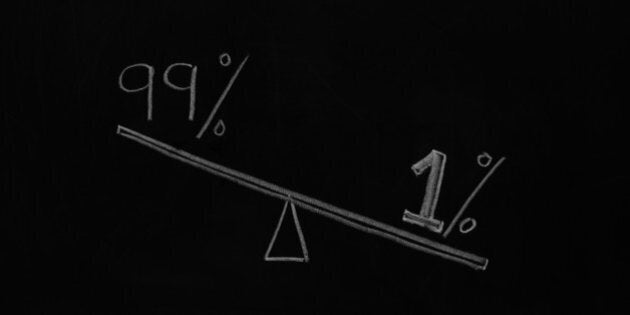
The financial crisis that peaked in 2008 has created a rippling economic effect across capital markets to date. It has also been identified as the emergent point of a new mass consumer behavioural shift. A shift that has since been informally characterized as an ethos of maximizing utility of personal assets through peer-to-peer digital marketplaces, the common moniker being collaborative consumption or the sharing economy.
PricewaterhouseCoopers (PwC) Consumer Intelligence report on the United States sharing economy stated "PwC's projections show that five key sharing sectors -- travel, car sharing, finance, staffing, and music and video streaming -- have the potential to increase global revenues from roughly US$15 billion today to around US$335 billion by 2025."
This peer-to-peer movement has not only transformed mature industries, it has penetrated the financial services sector, which some opine is the last bastion of the institutionalized business model.
Akseli Virtanen, co-founder of Robin Hood Minor Asset Management (Robin Hood), stated that, "Finance is becoming social. This will change it forever: socialization of finance will cause financial institutions to lose their monopoly of mediation. Massive amounts of assets and creation will start to move peer to peer. Through new ways of owning, financing and doing things together. Through smarter ways of distributing and sharing flows of value back to those who are creating it. Through new ways of creating together opportunities, which might not otherwise exist, new ways of acting on them, speculating, hedging and arbitraging together."
Run by Robin Hood Asset Management Cooperative, Robin Hood came to market in July 2012, declaring itself an activist hedge fund. On initial glance, Robin Hood displays the familiar attributes of established hedge funds, operating opportunistically to generate alpha, employing a sophisticated algorithm to extract market value, monitoring performance via a benchmark (S&P 500 Index), monitoring portfolio risk via Sortino ratio (2.26), Sharpe ratio (1.85) and Calmar ratio (7.60).
However, upon greater analysis, there is a clear divergence from hedge funds past. First, Robin Hood's directive is derived from its fabled namesake, propagating the notion of wealth democratization and redistribution from exclusivity to accessibility. The cooperative was built by academics, activists, artists, designers and community-minded collaborators to enable individuals to participate where institutions dominate. Second, Robin Hood is a profit-sharing enterprise that incentivizes members to direct profits to common good projects.
Indeed, the central premise of Robin Hood is acting as an economic equalizer for society's collective betterment. The cooperative employs a predatory algorithm called "Parasite" that mines dynamic market data to identify investment opportunities based on the movements of the market itself. This forms the thesis of their investment selection process. How effective is this approach? According to Robin Hood, they had "the third most profitable rate of return in the world of all the hedge funds" in their first year and they continue to be profitable.
In fact, the cooperative may present a real threat to the established asset management industry, striking on several factors raised by Casey, Quirk & Associates LLC in a November 2015 study, "The Roar of the Crowd: How Individual Investors Transform Competition in Asset Management." The study found that organic growth in the global asset management industry has been trending downward, from more than six per cent pre-2008 financial crisis to approximately two per cent as of late, with projections of further declines to below two per cent by 2020.
Casey, Quirk & Associates noted that, "changing demand factors are redistributing organic growth opportunities within asset management. The most tectonic change has been the shift in demand to individual from institutional investors worldwide. In 2014, individuals represented more than 90 per cent of net organic growth; for the rest of the decade, they will account for all of it, absorbing a significant amount of net redemptions from institutions." Additionally the study concluded that, "Technology will play a critical role in disintermediation.... Successful asset managers will invest in financial technology that makes them more competitive -- critical in an industry where rivalry will become even more intense."
Demographics also underpin a supportive environment for Robin Hood, as Millennials embark on their highest income earning years and wealth accumulation cycle. The Pew Research Center stated that, "This year, the 'Millennial' generation is projected to surpass the outsized Baby Boom generation as the nation's largest living generation, according to the population projections released by the U.S. Census Bureau last month. Millennials (whom we define as between ages 18 to 34 in 2015) are projected to number 75.3 million, surpassing the projected 74.9 million Boomers (ages 51 to 69)."
In Thomas Piketty's book, "Capital in the Twenty-First Century," the economist reveals that as one ascends to where wealth is most concentrated, the composition of wealth for the top decile (10 per cent) and centile (one per cent) is almost entirely comprised of investment securities.
"Nearly everyone in the top decile owns his or her own home, but the importance of real estate decreases sharply as one moves higher in the wealth hierarchy.... In the top centile, by contrast, financial and business assets clearly predominate over real estate. In particular, shares of stock or partnerships constitute nearly the totality of the largest fortunes.... Housing is the favourite investment of the middle class and moderately well-to-do, but true wealth always consists primarily of financial and business assets."
He also forecast that, "the United States may set a new record around 2030 if inequality of income from labour -- and to a lesser extent inequality of ownership of capital -- continue to increase as they have done in recent decades. The top decile would then claim about 60 per cent of national income, while the bottom would get barely 15 per cent."
If Robin Hood Minor Asset Management and other open architecture investment clubs achieve their objectives of tapping the sources of wealth of the top centile, then perhaps Thomas Piketty's prophecy of increasing hyper-inequality in the U.S. may be averted. By all indications, the asset management industry should take note of the arrow aimed at them.
ALSO ON HUFFPOST:
